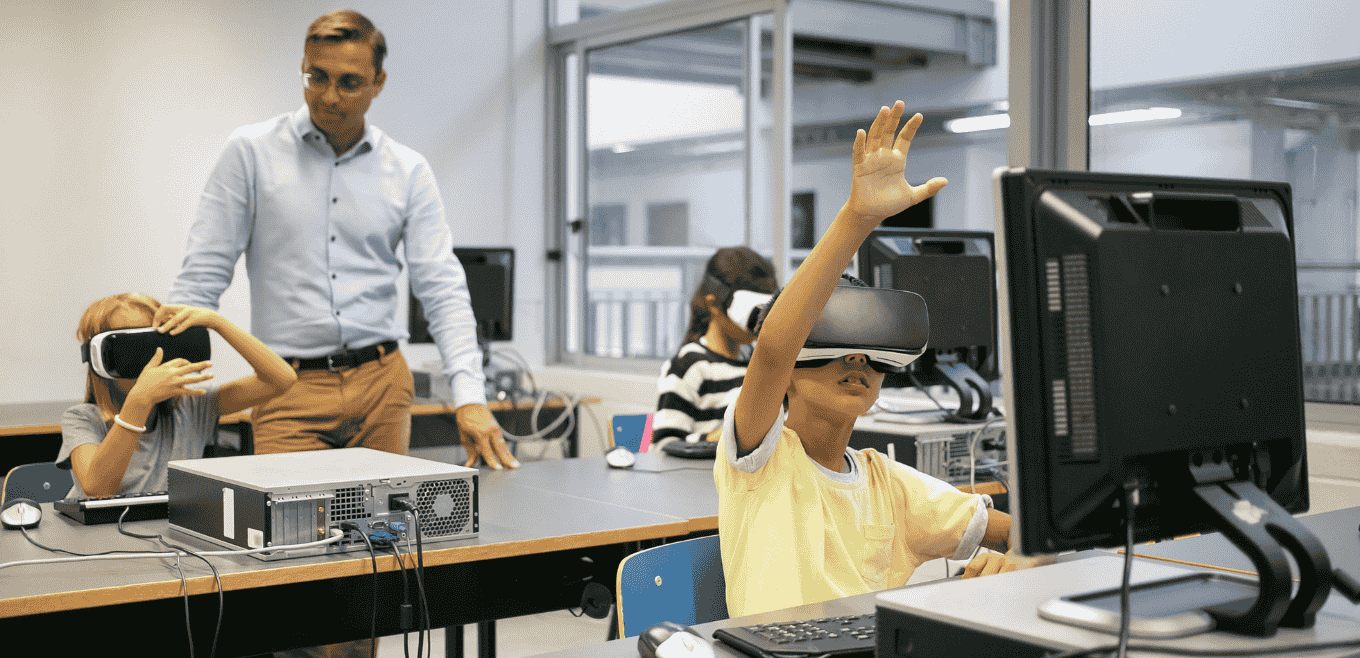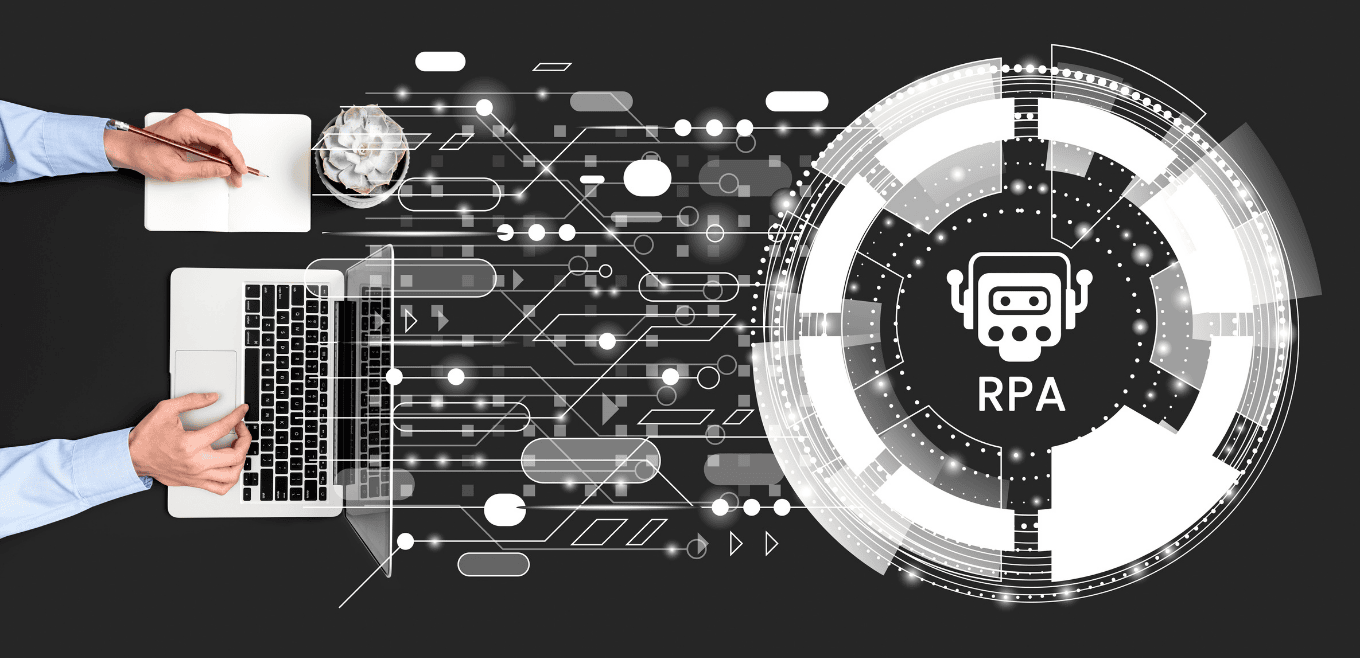Disruptive technology in education has fundamentally transformed the education sector by replacing expensive, complicated, and inaccessible products or services with much less expensive, simpler, and more convenient alternatives. Technology has resulted in a blended approach to education, which refers to a student learning from a combination of brick-and-mortar and online delivery with control over time, place, path, and pace.
Around the globe, EdTech is drastically changing the traditional educational landscape. We’re going to explore the top 5 EdTech trends in this blog, which are not only reshaping but also reimagining the educational process.
The future is full of innovation, from the rise of generative AI in assessments to the use of AI in question bank management. By 2030, the global EdTech market, which was valued at $133 billion in 2023, is projected to have grown to $433 billion.
Highlights of the technology-driven growth in the Education sector in 2024
There were a lot of highs and lows in 2023. It also saw a great deal of changes in terms of how technology was accepted and used in a variety of industries, particularly the educational field.
In 2024, there’s a good chance that these changes will pick up speed in all of the schools, colleges, and universities.
The use of online delivery methods for education will pick up speed in 2024. There will also be some significant adjustments made to the degrees that different universities offer. This will lead to changes in conventional teaching methods and a positive acceptance of online learning. Consequently, we will examine in this blog, how EdTech is likely to change the education sector in the coming years.
Future trends in education technology
1. Digital online assessments
A lot of presumptions have been exposed and turned into insights thanks to big data. Digital data assessment works hand in hand with personalization and differentiation to help students understand the concepts taught in the curriculum. They can receive the extra practice and instruction they need in digital assessments thanks to new, adaptable technology.
Students can easily make up the lessons they missed when school ended unexpectedly in the spring by using this advanced method. EdTech can assist in transforming the concept of customizing lessons to meet the needs of individual students into a reality.
2. AR/VR immersive learning

Using augmented reality (AR) and virtual reality (VR) to create immersive learning environments is one of the most cutting-edge approaches in education today. These technologies leverage their creative potential to capture students’ attention in ways that traditional classroom lectures often struggle to achieve. Immersive learning allows students to visualize complex subjects like coding, data science, or historical events in a dynamic, interactive environment, adding engaging elements to the educational experience.
For instance, in architecture and engineering education, students can use VR to walk through virtual models of buildings before they are constructed, gaining insights into design and structure in a fully immersive environment. Similarly, AR is enhancing biology education by allowing students to overlay digital 3D models of human organs onto their real-world surroundings, providing a more hands-on approach to understanding anatomy.
This method has been gaining traction over the past few years, particularly in fields where visualization and interaction are critical to understanding complex concepts. Through these interactive learning experiences, students and professionals alike can develop a strong foundation in emerging technologies like AR and VR.
3. Robotic Processes Automation


Robotic Process Automation (RPA), also known as software robotics, is transforming educational administration by automating repetitive tasks that often consume significant time and resources. RPA leverages automation technologies to handle mundane administrative processes such as grading assignments, managing admissions, processing student records, and extracting data from various systems.
In the context of education, RPA tools streamline tasks like scheduling, attendance tracking, and fee collection, freeing educators and administrators to focus on more critical tasks like curriculum development and student engagement. By minimizing human error and reducing manual effort, RPA helps educational institutions operate more efficiently and improve the overall learning experience.
For example, universities are increasingly using RPA to automate the admissions process, ensuring faster application handling, more accurate data entry, and timely responses to applicants. Additionally, RPA can assist in generating reports for student performance analysis, allowing educators to quickly identify students who may need additional support.
This digital transformation driven by RPA not only improves operational efficiency but also ensures a smoother and more personalized experience for both students and staff. As educational institutions continue to adopt EdTech, RPA stands out as a key player in optimizing administrative workflows, enabling institutions to focus more on delivering quality education.
4. Gamified learning
The most current development in educational technology is gamified learning. There’s no reason why children shouldn’t actively engage in classroom activities. Students have the opportunity to learn and practice while engaging in engaging game activities. Game features are advantageous to learners because they foster both enjoyment and a supportive learning environment.
Most often, game-based learning is employed in the education of students in kindergarten through twelfth grade. The gaming industry is fascinating and a lot fun. Children are therefore very interested in gaming videos and trying to raise their scores in games. However, this does not lessen the significance of engaging components in corporate training or higher education to encourage student participation.
5. AI-powered learning


Artificial Intelligence (AI) is revolutionizing education by making learning more efficient, personalized, and engaging. From automating routine tasks to enhancing the learning experience, AI is transforming how education is delivered and consumed.
One of the significant advancements in this space is Generative AI, which has opened up new possibilities in creating customized educational content. With Generative AI, educators can generate lesson plans, quizzes, and even interactive content tailored to the unique learning styles and needs of individual students. This technology helps reduce the time spent on content creation, allowing teachers to focus more on student engagement and support.
Additionally, AI-powered tools, such as intelligent tutoring systems, provide students with real-time feedback and personalized learning pathways. These systems can assess students’ strengths and weaknesses and adapt the curriculum accordingly, ensuring that every learner progresses at their own pace. AI also powers chatbots, which can answer students’ questions, provide instant feedback, and offer resources when teachers are unavailable.
Generative AI also plays a key role in automating the assessment process. AI-driven platforms can generate assessments, analyze students’ answers, and provide detailed feedback, reducing the manual workload for educators. This enables more frequent assessments and better tracking of students’ progress.
In administrative areas, AI simplifies tasks such as student performance analysis and schedule management, while helping teachers stay updated on the latest educational trends through AI-curated notifications. As AI technology continues to evolve, its role in education will only expand, creating more personalized and efficient learning environments for both students and educators.
Conclusion
The advancement of technology has revolutionized teaching and learning, enabling more personalized, engaging, and immersive educational experiences than ever before. Remote learning programs are designed to maximize student engagement, knowledge sharing, and interactive learning. By leveraging online learning platforms for collaboration, this approach fosters a student-centered learning environment that adapts to individual needs and interests.
At People10, we collaborate closely with our clients to develop bespoke eLearning solutions that align with their specific goals and objectives. Our team brings deep expertise and industry knowledge to create tailored learning paths and content that meet the unique requirements of each organization or individual.
By crafting custom eLearning solutions on demand, we empower learners to build essential skills, acquire knowledge, and stay ahead of the latest industry trends. Our approach ensures that organizations and individuals can continuously grow and thrive in their respective fields.
Author
Nandakumar excels in delivering diverse solutions from mobile apps to complex enterprise systems. At People10, he continues to drive success with a focus on customer satisfaction and innovative technology solutions.




